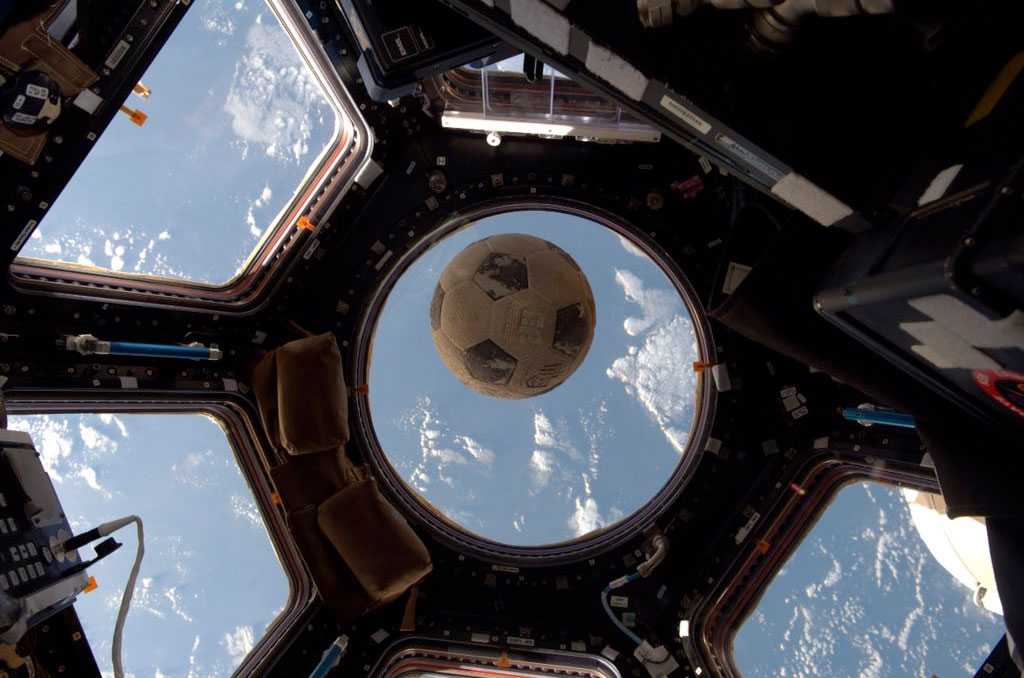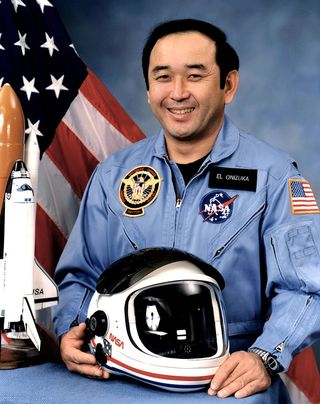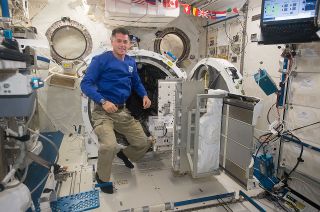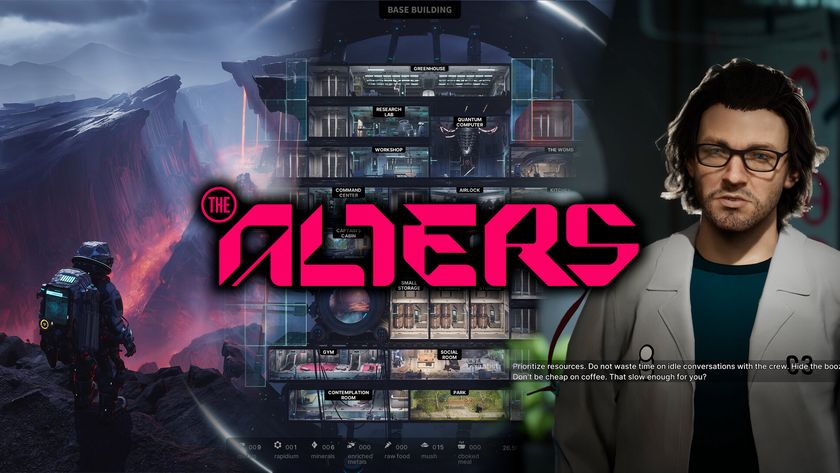Soccer Ball Recovered From Ill-Fated Shuttle Challenger Flown to Space Station

HOUSTON — A soccer ball that was on the ill-fated launch of the space shuttle Challenger has made it to orbit 30 years later, thanks to a shared connection between one of the fallen astronauts and the current commander on the International Space Station.
NASA astronaut Shane Kimbrough, the commander of the station's Expedition 50 crew, posted to Twitter Friday (Feb. 3) a photo of the black and white ball floating in front of the windows in the orbiting laboratory's Cupola. His post came less than a week after the anniversary of the Jan. 28, 1986 Challenger tragedy.
"This ball was on Challenger that fateful day," Kimbrough wrote. "Flown by Ellison Onizuka for his daughter, a soccer player." [Remembering Challenger: NASA's 1st Shuttle Tragedy (Photos)]
Kimbrough ended his post by referencing Clear Lake High School (CLHS) in Houston, Texas, and adding the hashtag #NASARemembers.
Like Onizuka, Kimbrough is a "Falcon dad" — his son is currently a junior at the high school and is a member of its Falcon sport teams. (Kimbrough also has twin daughters in their first semesters at college.)
"Space station commander Col. Shane Kimbrough took a piece of CLHS Falcon history into space," the high school announced on its website. "The soccer ball was signed by members of the CLHS girls and boys soccer team in 1986 and was carried onboard the last flight of the space shuttle Challenger by another Falcon dad — Col. Ellison Onizuka."
Onizuka's daughter, Janelle, was a 16-year-old member of the soccer team at the time and is now a "Falcon mom."
Get the Space.com Newsletter
Breaking space news, the latest updates on rocket launches, skywatching events and more!

"The soccer ball in many ways has continued the mission my father embarked upon so many years ago," remarked Onizuka-Gillian in the statement released by CLHS. "It has continued to travel and explore space, while inspiring so many through its history."
Ellison Onizuka was making his second flight as a mission specialist when Challenger was lost 73 seconds into flight. Cold weather compromised a seal on one of the twin solid rocket boosters. Gas burning through the wall of the right booster damaged its connection to the vehicle, causing the structural failure of the external tank.
Challenger broke apart, giving way to aerodynamic forces, and fell in pieces into the ocean.
The tragedy claimed Onizuka's life, along with those of commander Dick Scobee, pilot Michael Smith, mission specialists Ron McNair and Judy Resnik, payload specialist Gregory Jarvis and Teacher-in-Space Christa McAuliffe.

Several of Onizuka's personal items, including a football, an American flag and the soccer ball were found floating in the water during the retrieval of the wreckage of the space shuttle.
After NASA's investigation into the accident was complete, Challenger's debris was placed into storage in two retired missile silos at the Cape Canaveral Air Force Station. The crew's personal items were presented to their families.
Onizuka's family later returned the recovered soccer ball to Clear Lake High School.
"Thank you Shane Kimbrough for helping a piece of CLHS Falcon history complete its mission in space!" the school tweeted on Friday.
Follow collectSPACE.com on Facebook and on Twitter at @collectSPACE. Copyright 2017 collectSPACE.com. All rights reserved.
Join our Space Forums to keep talking space on the latest missions, night sky and more! And if you have a news tip, correction or comment, let us know at: community@space.com.

Robert Pearlman is a space historian, journalist and the founder and editor of collectSPACE.com, a daily news publication and community devoted to space history with a particular focus on how and where space exploration intersects with pop culture. Pearlman is also a contributing writer for Space.com and co-author of "Space Stations: The Art, Science, and Reality of Working in Space” published by Smithsonian Books in 2018.In 2009, he was inducted into the U.S. Space Camp Hall of Fame in Huntsville, Alabama. In 2021, he was honored by the American Astronautical Society with the Ordway Award for Sustained Excellence in Spaceflight History. In 2023, the National Space Club Florida Committee recognized Pearlman with the Kolcum News and Communications Award for excellence in telling the space story along the Space Coast and throughout the world.










